The connection between shinty and the Highland Folk Museum goes back to the museum’s origins, though it’s in the last few decades that the sport has become more embedded into the museum collection and activities.
The original museum collection dates back to the 1930s, when founder Dr Isabel Frances Grant toured the Highlands and Islands, collecting everyday objects in order to preserve the social history of the area. Although she writes about shinty in her book Highland Folk Ways (1961), surprisingly she didn’t collect many shinty artefacts herself – just one caman (stick) which belonged to William Mackintosh of Glenfeshie, who founded the Glasgow Inverness-shire Shinty Club.

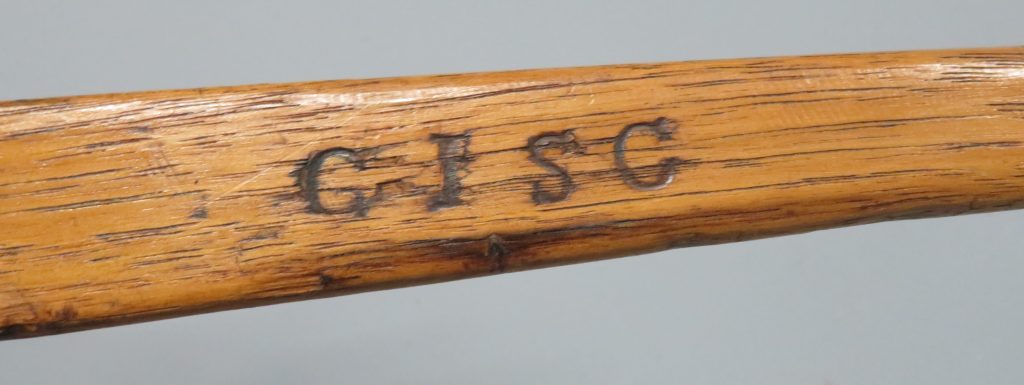
Caman that once belonged to William Mackintosh of Glenfeshie, with detail of Glasgow Inverness-shire Shinty Club initials. Image copyright: Highland Folk Museum
I.F. Grant paints quite a wild picture of attending a shinty match. Some of the details might possibly be familiar to the modern players and spectators…home-coming celebrations have been known to involve a drop of whisky or two.
“To watch shinty at its liveliest one must see a match between the teams from two neighbouring and rival districts. The speed is terrific. The spectators, all local people, are whipped up to vociferous animosity against the opposing side. Casualties are borne off the field (sometimes including spectators hit when the ball flies wide) but they generally soon rise to re-engage in the conflict. After a cup-match the winning team carries the trophy home in triumph and it is filled and refilled with whisky by a public-spirited hotel keeper and carried up and down the village street every passer-by being given a sip out of it.” (1)
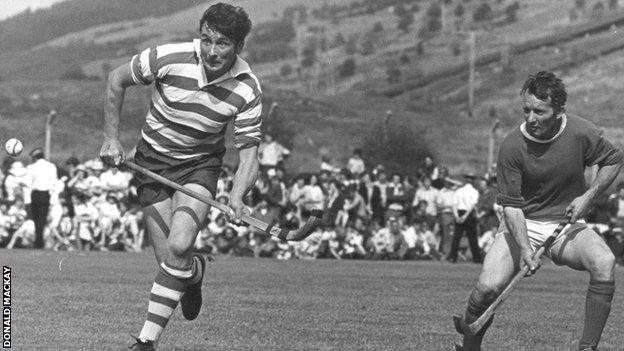
Speed and focus: John MacKenzie of Newtonmore, in the 1978 Camanachd Cup Final against Kyles Athletic, held in Fort William. Image copyright: Donald Mackay
A small number of shinty artefacts were collected by the museum in the years after I.F. Grant retired, including camans, leathers and medals, but it wasn’t until the 1980s and 90s that the collection started to grow. In 1980, the Camanachd Cup Final, the biggest event in the shinty season, was held in Kingussie. An exhibition was organised by Jack Richmond of Newtonmore, Chairman of The Future of Shinty Committee, in collaboration with the Highland Folk Museum. It was held at the Tourist Office in Kingussie, during the cup final weekend. The exhibition presented a small selection of shinty photographs and illustrations, and also acted as one of the first call outs to the public, asking them to contribute their own photographs to the history of the sport, and also to help identify people in the photographs. Photographs were copied by the museum, in an early digitisation project.
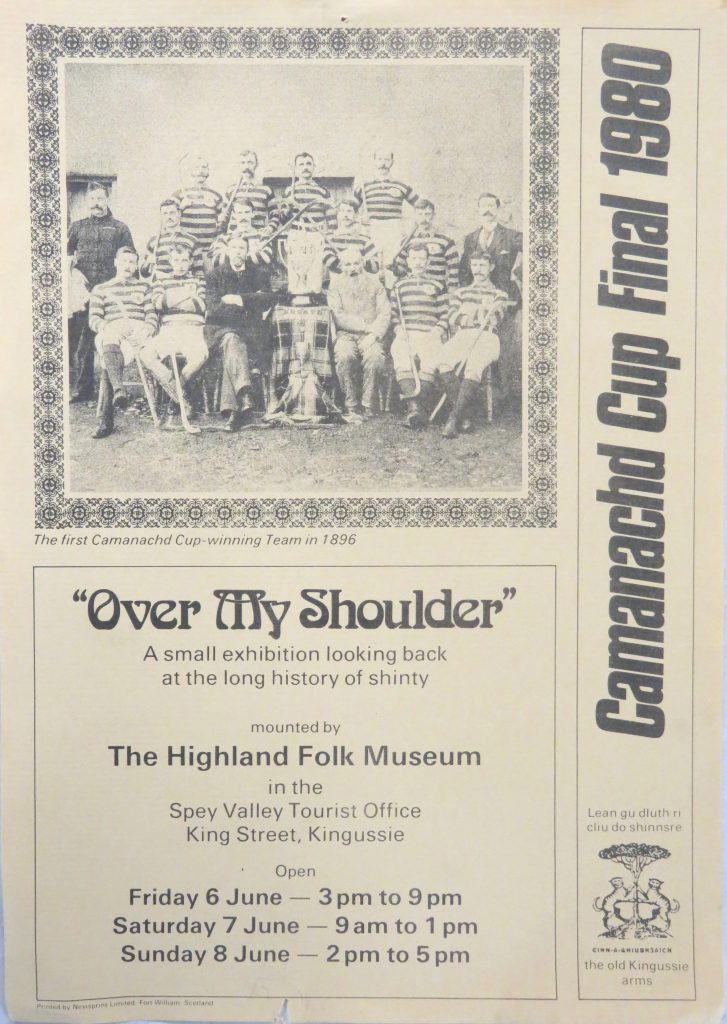
Poster advertising the 1980 shinty exhibition “Over my Shoulder”
In 1993, the Camanachd Association arranged an exhibition to mark their centenary year. “Shinty: Sport of the Gael” was a touring exhibition, which came to reside at the Highland Folk Museum in the newly established Museum of Highland Sport after it had run its course around Scotland. This featured a more expansive look at the history of shinty, and included examples of camans and leathers, match programmes and silverware. In 2000, this display made way for the visitor centre that was set up in the building – where the café and shop are now situated. We have much of the exhibition content here in the archive – digitising and documenting this resource is all part of the project that I’m working on over the coming year.
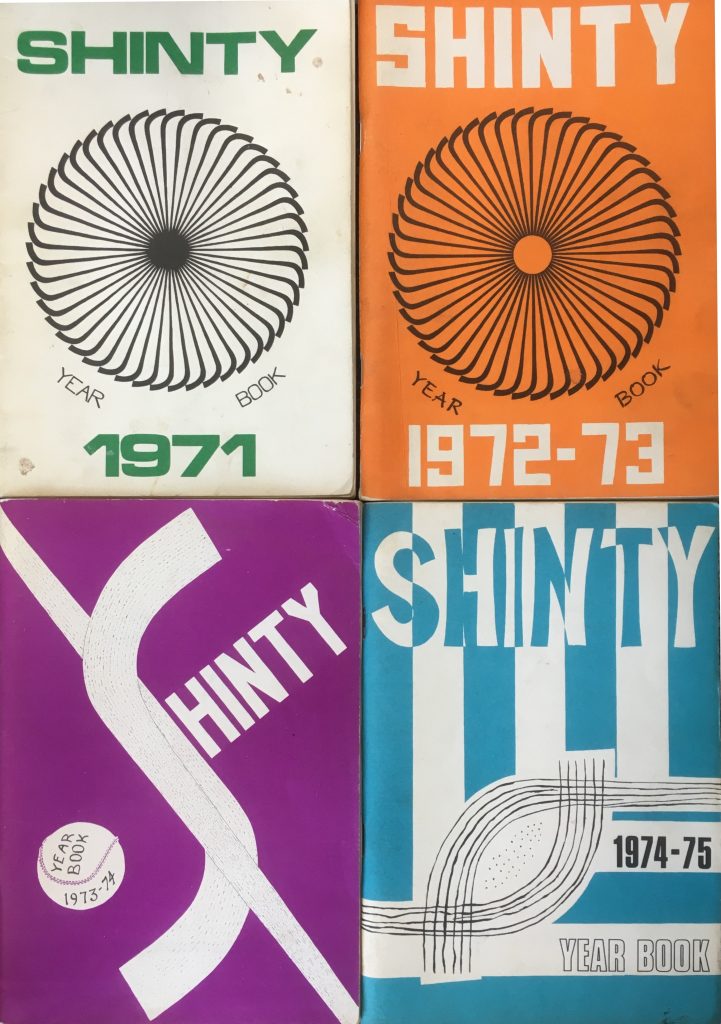
The collection includes copies of shinty year books, first published in 1971
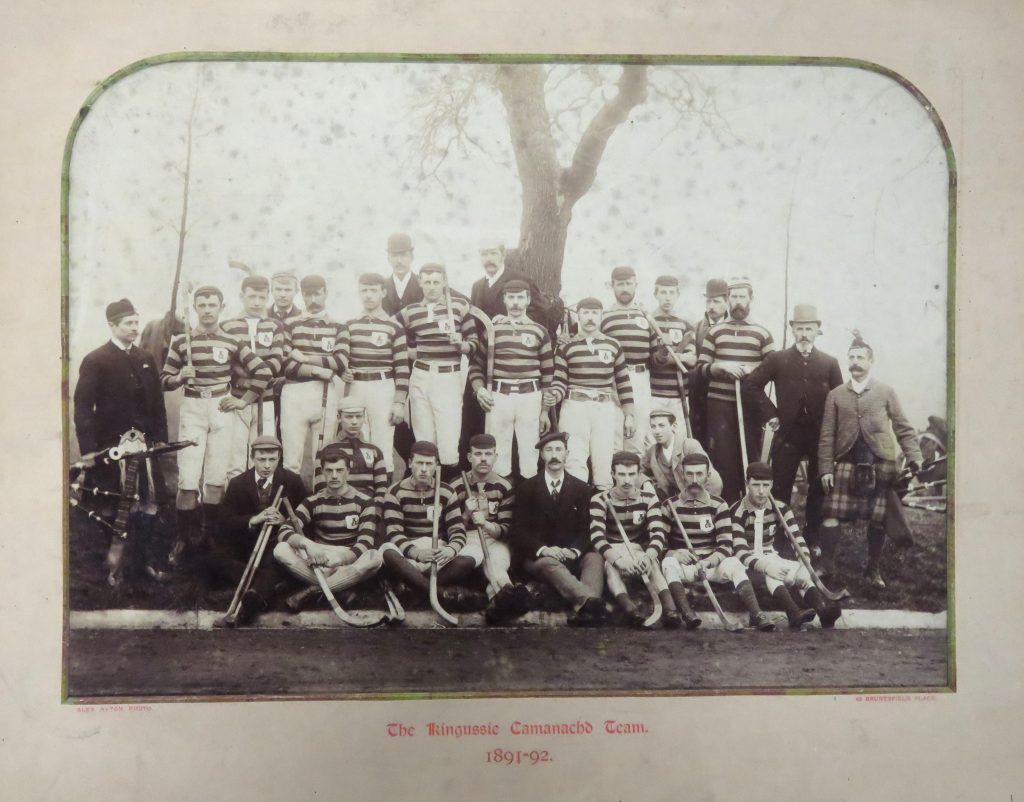
Early photograph of Kingussie Camanachd Team, 1891-92
In 2013, the Highland Folk Museum acquired a very significant, and large donation: the Boleskine shinty pavilion from Foyers, Loch Ness. This sports pavilion had been built by the British Aluminium Co. Ltd. Works in 1930, to support their workers’ recreational activity, in particular shinty. Aluminium production ceased in 1967, and by 2012, the building was threatened with demolition. Luckily it was saved from this fate by a number of concerned parties. The pavilion was dismantled, transported and rebuilt in the centre of the Highland Folk Museum site. Set on an acre of land, it has a playing ground stretching out in front of the building.
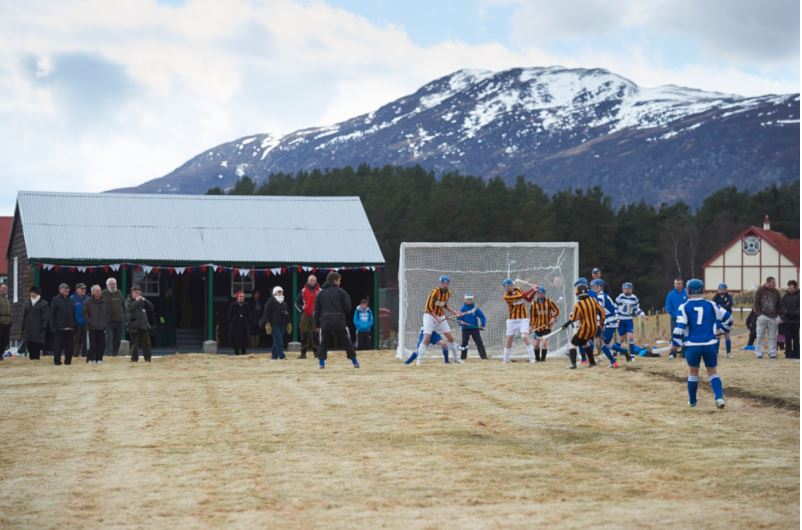
The opening of the Boleskine pavilion, March 2013, with a snowy Creag Dhubh in the background
Although not a full sized shinty pitch in modern terms, it has an authentic slope to it and is characteristic of the kind of ground that would be given over to the game across Highland communities. In one half of the pavilion building is the team changing room, replete with boots, jerseys, flask and a first aid kit, while the other half tells the story of shinty (thanks to local shinty historian Rosemary Gibson for the well-researched content).
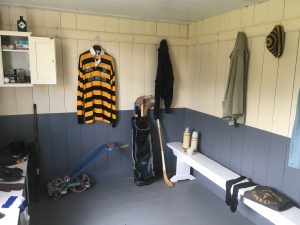
Inside the Boleskine shinty pavilion
The pavilion and pitch is a unique and very special asset for the museum – there’s nothing like being in the very building that has held its fair share of teams over the years. If the walls could talk I’m sure it would tell some tales of friendships and rivalries, of celebrations and bitter defeats.
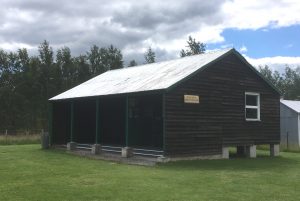
The museum now holds an annual primary schools shinty competition, the Am Fasgadh Quaich. The inaugural cup was held in 2013 at the official opening of the pavilion. The most recent competition was held at the end of August and won by Kingussie. Badenoch Shinty Memories was present at the competition this year, bringing together some of the shinty legends of the past with the young players of the future. It’s wonderful to have the pitch and pavilion brought to life with these events, and we look forward to hosting many more in the years to come.
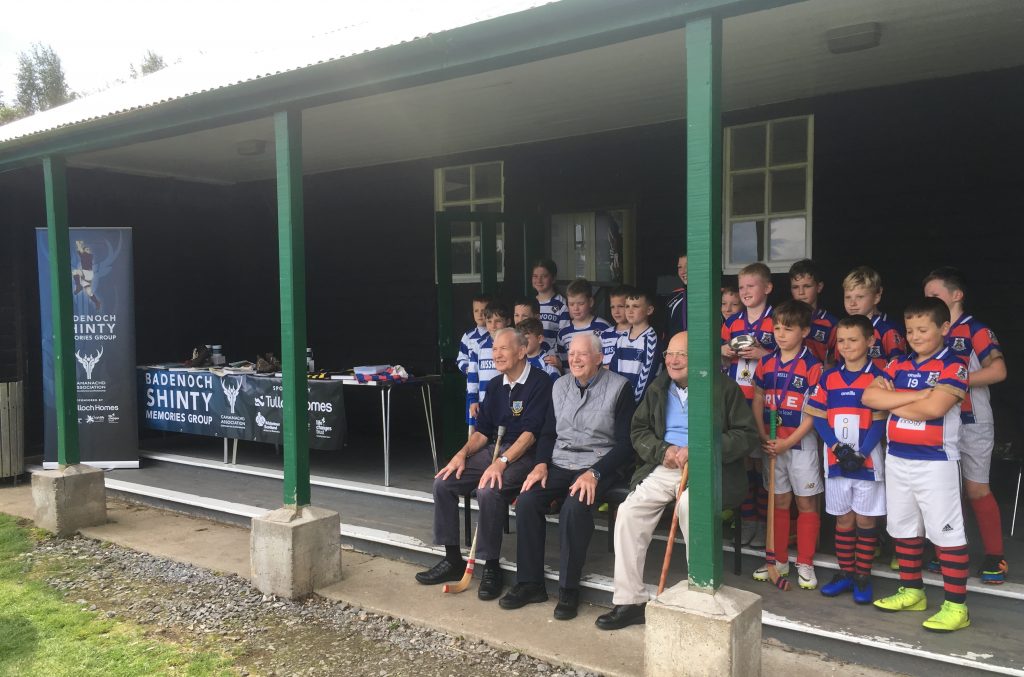
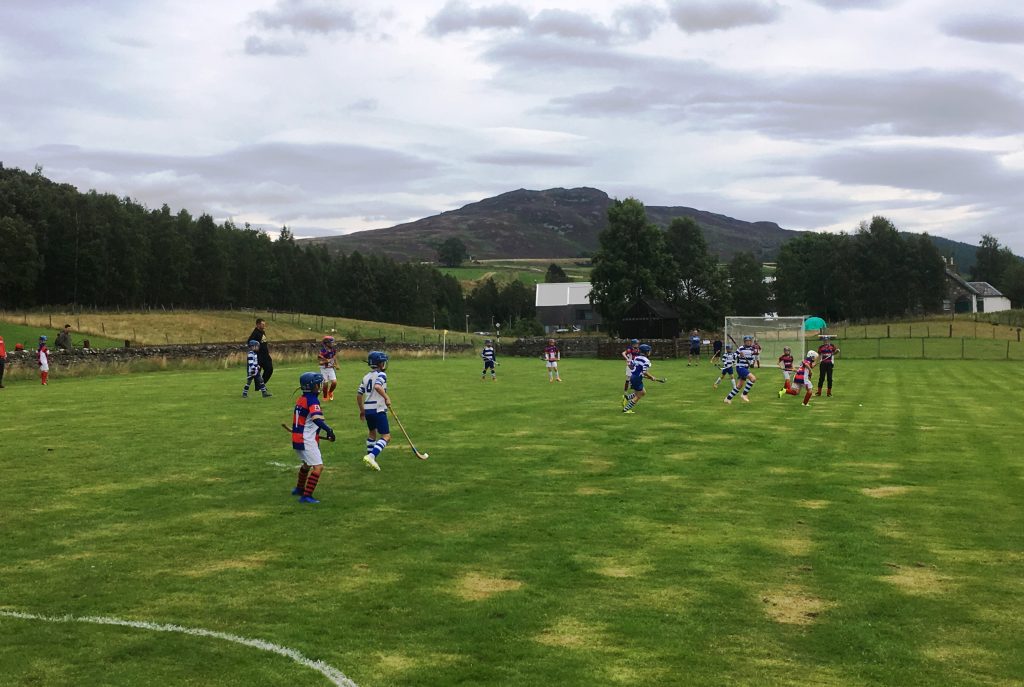
Kingussie v. Newtonmore, Am Fasgadh Quaich, August 2019
We’re launching this blog on National Sporting Heritage Day 2019, which is organised by Sporting Heritage, a UK wide organisation who promote and advocate for sporting collections across the country. Find out more below. Throughout the project we’ll be making the shinty collection here at the Highland Folk Museum more accessible and building stronger links to sporting heritage bodies such as this.
References: (1) Grant, I.F. (1961) Highland Folk Ways. London: Routledge. P349
Previous blog post -Blog Post #1 Shinty and the Highland Folk Museum – part 1
Next blog post – Blog Post #2 The Caman; an art and a craft

